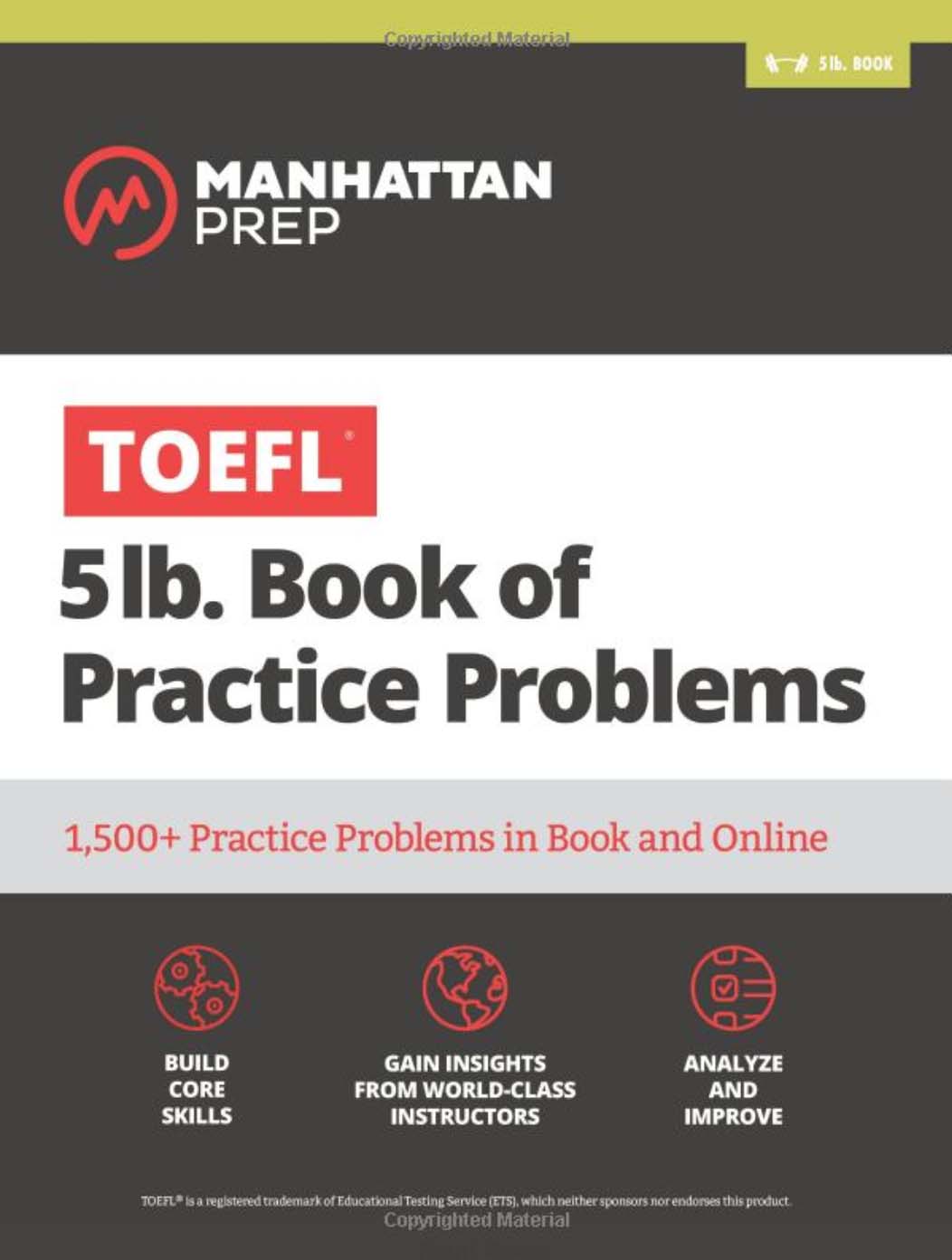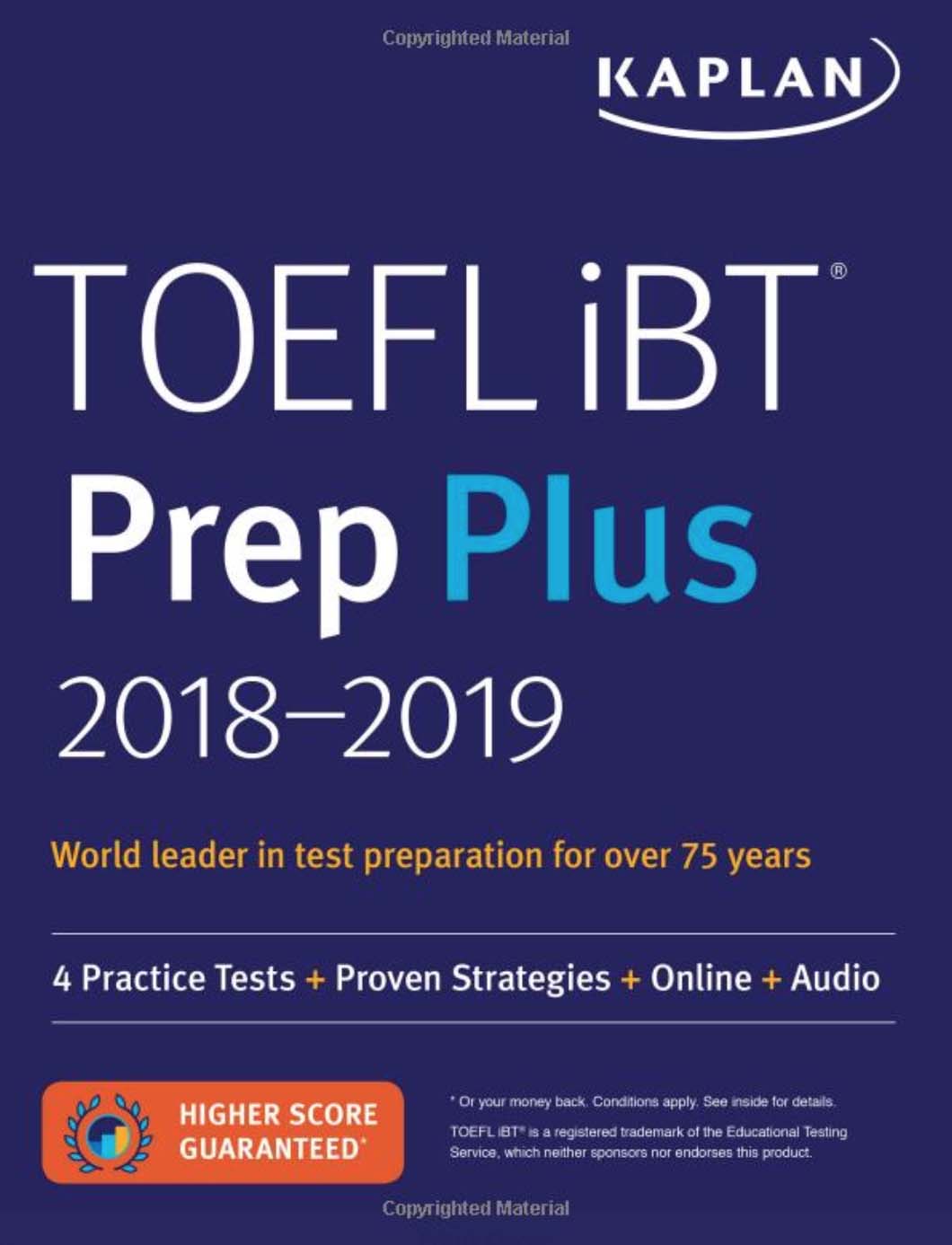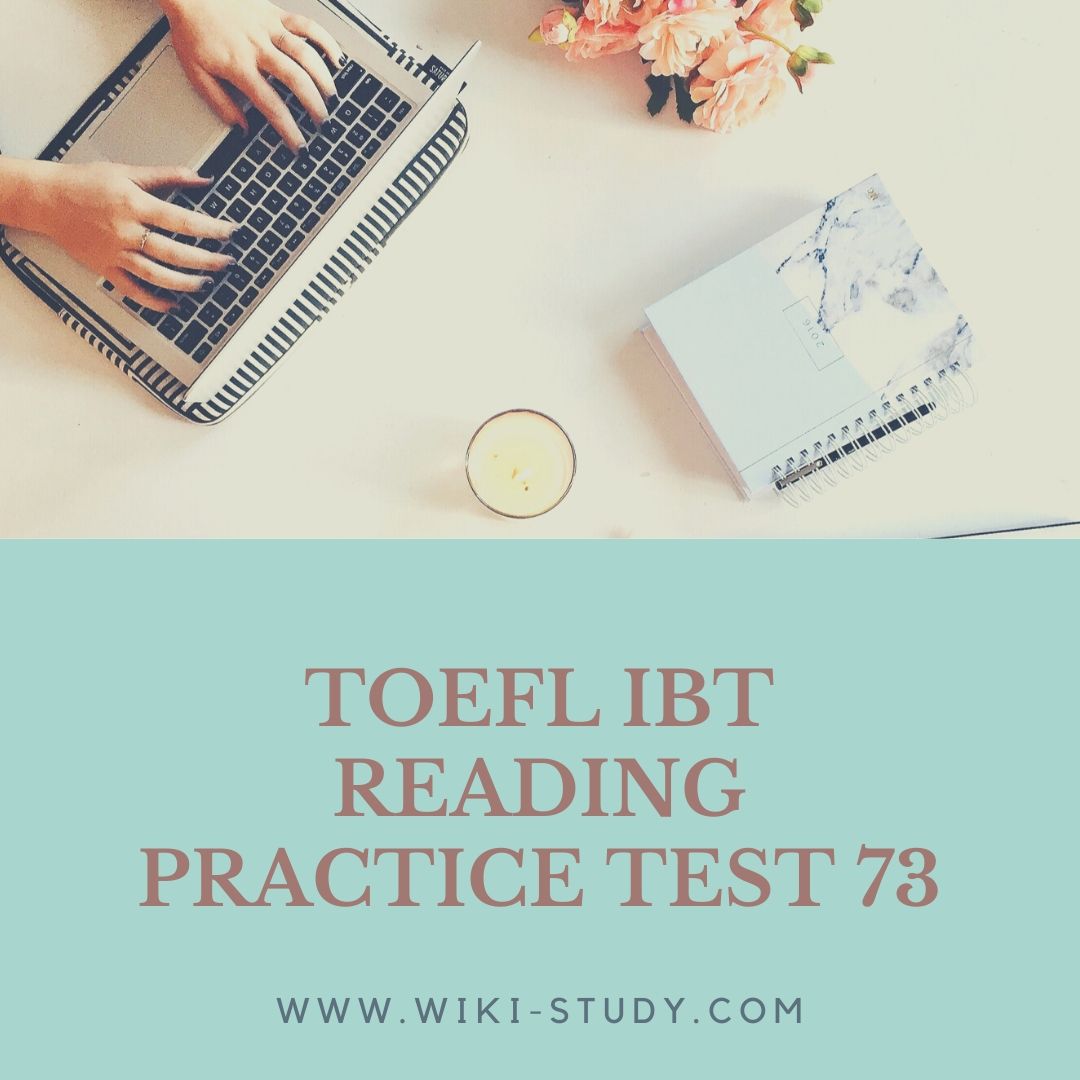“Slow and steady wins the race.”
This classic saying means that it is best to move toward your goals at a comfortable but persistent (regular or even) pace.
If you try to move too fast, or to do too much at once, you may actually make things harder for yourself.
This simple idea can help you score high on the TOEFL and master the English language.
But how?
Well, in order to do either of those things, you need to build your English vocabulary.
Sure, just a few simple words—along with hand and facial expressions—can get you understood in an English-speaking country.
You can find the bus to where you want to go or buy a loaf of bread.
But knowing only a few words and pointing with your index finger will not allow you to communicate complex ideas, and it most certainly won’t be enough to get a great score on the TOEFL.
The more words you know, the better—and the best way to learn more words is at a slow and steady pace.
Improving your vocabulary will help you to express yourself, to share your ideas and to understand others. It will also help you to reach your academic and professional dreams using English.
Learning new words in a foreign language can be challenging, but it doesn’t have to be boring or frustrating.
By taking things slowly and using the proven techniques and steps below, memorizing essential words for the TOEFL will be easy and fun for you.
Let’s get started!
How to Effectively Learn TOEFL Vocabulary in 5 Simple Steps
It is easy to get lost among all the English words. Your thick dictionary has thousands of words, and even the TOEFL essential word lists have several hundreds of them. Are you supposed to learn all of them at once? Of course not!

How to Effectively Learn TOEFL Vocabulary in 5 Simple Steps
It is important to progress slowly but steadily, at your own pace.
Aiming to learn five new words a day, five days a week, is a proven strategy I recommend to my friends.
5 words a day, or 25 words a week, may not seem like much. But if you think about it, that is about 100 new words a month, or 1200 words a year.
Since most essential TOEFL words lists and books include 4-500 words, this means that you can master all of them in 4-5 months.
In fact, it is highly likely that you already know many of them, and you will need less time to remember the rest.
Also, learning five words a day is only active learning, or making an actual effort to intentionally remember new words.
Simply using English for fun (through reading, writing, listening and speaking) will allow you to gain even more knowledge passively, or without any effort.
By reading magazines and books, watching movies or YouTube videos and chatting with others online, you will soak up new words just like a sponge.
But how can you effectively learn five new essential TOEFL words a day?
Here are five proven steps.
1. Create categories
Creating categories is important because it allows you to imagine your words in context.
This is how your brain already works: Words don’t appear by themselves in real life. You always organize your thoughts around different categories. You discuss ideas around various topics, for example. So it is useful to relate your vocabulary to categories as well.
This approach is generally helpful for studying for the TOEFL, as the reading, writing and listening sections are all related to specific categories.
Establish some basic categories
Make a list of specific categories that are relevant to your life and the TOEFL test. You may want to check with a TOEFL study guide for categories appearing on the test.
Your categories may include (but are not limited to):
- Education
- Career
- Business
- Relationships
- Family
- Sports
- Religion
- Politics
- Environment
- Health
- Food
- Culture
- Travel
- Leisure
Remember, these are only examples. You may use any other categories that you can think of, and you do not have to focus on all of the examples above. It is up to you which categories you start with, but it is a good idea to focus on those that you are the least familiar with.
Break down your categories into sections
After you have your categories, create sections under each category.
These sections may include:
- People
- Groups
- Places
- Actions
- Things
- Feelings
- Experiences
- Personality
- Descriptive Words
- Relationships
Again, these are only examples. You do not have to use all of these sections, and feel free to add any other ones you find relevant. Which sections you end up using will depend on your categories and the specific vocabulary you are learning.
Fill your categories with existing vocabulary
Once you create a table for a category with relevant sections, fill out each section of each category with words (and phrases) you already know.
For example, let’s say you have the category “Education.”
Under the “People” section of the “Education” category, you may add these words:
teacher
professor
student
Under “Groups” in the same “Education” category, you may write:
class
choir
chess club
Let’s look at other words you might write under a few more sections in “Education.”
“Places”:
school
university
classroom
“Actions”:
to teach
to learn
to take an exam
“Things”:
notebook
laptop
pen
“Feelings”:
excitement
anticipation
anxiety
“Experiences”:
class trip
graduation
school dance
“Personality”:
lazy
studious
quiet
“Descriptive Words”:
smart
creative
challenging
“Relationships”:
friendships
classmates
boyfriend
Filling out your categories with your existing vocabulary is a true confidence booster. You know so much already!
Now it is time to add new words and to learn them.
2. Select your words
Choose a category for the week. For example, pick “Relationships” for this week.
Rotate your categories. Pick a new category every week or every two weeks. This will help to avoid boredom and to establish a diverse vocabulary.
Choose five words a day
For every day, choose five words related to your category that you don’t know. You may pick out all 25 words for the week ahead of time, scheduling five for each day. You may also pick your words daily.
It is your choice, but don’t try to memorize more than five words per day.
Also, do not add new words to your list over the weekend. Reserve weekend days for review and rest.
How to select your new words
There are a variety of ways you can select your words.
- You can find words from a TOEFL essential word list or book.
This is a great approach, because you will increase your chances that these words will appear on your TOEFL test. It is helpful to use a list that breaks down words into categories. Open your book or scroll down on the webpage to your relevant category. If you don’t find your exact category, you may find something that is related to it. For example, if you are focusing on “Relationships” this week but this category is not on your list, you may want to look at “Family,” “Friendships” or “People.”
Once you have your category, cross out the words you already know. From the remaining ones, select five. You can do this alphabetically, or randomly.
- You can select words from reading and listening practice material.
Find listening or reading practice material relevant to your category. If you have picked “Relationships” as your category, look for a reading that focuses on relationships. It can be about family, friendships, romantic relationships, relationships with coworkers or anything else that is relevant.
If you can’t find anything in a TOEFL practice book, you may look for a news article on Breaking News English. For example, this one called “Facebook ‘selfies’ can harm relationships.”
You may also read a chapter in a book in English related to relationships. For example, “Anne of Green Gables” is an adorable story of an orphan girl’s life that talks about her relationships with her adoptive parents, friends and love interest.
When reading your article or chapter, underline unknown words. Select five that are related to your topic.
To choose your words from listening materials, you can follow the same idea. You can use CDs from TOEFL practice books, or any other relevant material. For the “Relationships” category, you could watch an episode of the show “Friends” to find words relevant to friendships and love.
What your vocabulary for the week should look like
If you have selected “Relationships” as your category, your week may look like this:
- Day 1: sibling, bond, complex, paternal, inheritance
- Day 2: affection, passion, devotion, reciprocity, commitment
- Day 3: clique, associate, coworker, acquaintance, exclusive
- Day 4: solidarity, in common, loyal, vow, reception
- Day 5: willing, obnoxious, humiliation, gentle, engaged
Organizing your vocabulary into sections may look like this:
Category: “Relationships”
Sections:
- People: sibling
- Group: clique
- Relationship: sibling, bond, paternal, associate, coworker, acquaintance, exclusive, in common, engaged
- Feeling: affection, passion, devotion, reciprocity, humiliation
- Personality: loyal, gentle, obnoxious
- Experience: solidarity
- Descriptive Words: complex, exclusive, loyal, gentle, obnoxious, willing
- Things: inheritance, vow, reception, commitment
3. Define your words
Once you have selected your words for the day, your next step is to define them.
Begin by trying to guess the meaning of each word. Then turn to your dictionary. Use a monolingual English (English-only) dictionary to get used to thinking in English. Only use a bilingual dictionary (to check the meaning in your native language) if it is absolutely necessary.
Create your own definition
Once you have found the dictionary definition, create your own definition.You may write an entire sentence as your definition, or if it helps, draw it.
In the context of relationships, a dictionary definition for engaged may be: “pledged to be married; betrothed.”
On your own, you may want to define engaged like this:
“When a person is engaged, he/she has promised his/her significant other to marry him/her, and is planning to be married in the foreseeable future.”
You may even draw a picture of an engaged couple.
Use your thesaurus
After you have defined your word, turn to your thesaurus to check for synonyms and antonyms. Synonyms are words with similar meaning to your original word while antonyms mean the opposite.
Synonyms of gentle include:
soft
calm
serene
tame
Antonyms include:
rough
hard
violent
Note that not all words have synonyms and/or antonyms.
Day 1 examples
Let’s look at Day 1 of your “Relationship” word list:
Day 1: sibling, bond, complex, paternal, inheritance
Sibling:
Definition: a brother or sister
Synonyms: brother, sister
Antonyms: none
Bond:
Definition: something that binds, holds together; firm assurance; agreement of friendship or relationship
Synonyms: relationship, alliance, tie, connection
Antonyms: none
Complex:
Definition: characterized by very complicated arrangements; composed of many interconnected parts; difficult to understand
Synonyms: complicated, difficult, knotty, tangled
Antonyms: easy, clear, simple
Paternal:
Definition: related on the father’s side; relating to a father; characteristic of a father; fatherly
Synonyms: fatherly, father-like, patriarchal
Antonyms: maternal
Inheritance:
Definition: something inherited; something passing at the owner’s death; legacy
Synonyms: legacy, estate, endowment, gift, heirloom, birthright
Antonyms: none
4. Review your words over the week
To remember your words, it is important to review as frequently as possible. During your week, it is best to schedule quick review sessions lasting 3-10 minutes each. Here are a few different ways you may choose to review your words.
How to review your words
Write your word on one side of a card, and the definition on the other side. Read them on public transportation or when waiting in line. Run through them during your lunch break or any break you have. Run through your flashcards a minimum of three times a day.
- Use sticky notes around the house
Post sticky notes in areas that you frequently pass by—the bathroom mirror, your dresser, your fridge, the door and so on. When you see a word, define it, repeat it three times and use it in a sentence. Of course, if you pass a certain sticky note 50 times a day, you don’t have to do the exercise every time. Just make sure to practice each word at least three times a day.
- Set reminders on your phone several times a day
When the alarm goes off, run through your flashcards or write sentences with your words. You can even rotate your words, setting a reminder for a new word every hour. Aim for two or three alarms per word per day.
- Use your words throughout the day
Use your words when interacting on social media, speaking with English speakers or attending an English class. There is no minimum or maximum for how many times you should do this. Use every opportunity and challenge yourself.
- Use your words in your writing and speaking practice
When you are doing TOEFL specific writing and speaking exercises, make sure to include some of your new words in your essays or spoken answers. Don’t force it: You don’t have to use all of them, only when it makes sense to do so.
It is best if they are English speakers or English learners, but non-English speakers can test your knowledge, too. If you can ask someone to quiz you daily, that is great. If not, try to do this 2-3 times per week or use your weekend for this.
If you feel confident that you know a word and your quiz results prove it, you may “retire” the word—remove it from your flashcards and sticky notes.
This way you can check your progress, and increase your confidence. But don’t worry if you still have all 25 words on sticky notes by the end of the week. It is not actually a race. Just take your time with memorizing, and go at your own pace.
How to use your words in sentences
Using your words in a sentence is possibly the best way to review them. Remember, words don’t stand alone. They are used in the context of sentences, texts, audio, videos and conversations.
The purpose of the TOEFL test is to measure your ability to use English in a real-life setting: Real life is about sentences, not just words. So let’s look at some examples of how you might put your TOEFL words into sentences.
Some examples to use bond with would be:
- I have a special bond with my brother, because we grew up together, have many memories and share many secrets.
- Lydia is a new mom. She is bonding with her child through taking care of her, holding her in her arms and speaking to her softly.
- Becky felt an immediate bond with James. She knew he was the one the day they met.
When writing sentences, use your imagination. How would your favorite movie character, the president, your grandmother, Mickey Mouse or anyone else you can think of use this word? How would you use the word in different situations?
Thinking about the word sibling, I came up with the following answers:
- My favorite cartoon character, Snoopy, would jump around after receiving a postcard from Spike. He would tell Charlie Brown, “Spike is coming to visit me from Arizona. He is my sibling. Actually, he is my brother because he is a boy.”
- A teacher may share the definition of sibling with a class by saying, “Jane is a girl. David is a boy. Jane is David’s sister. David is Jane’s brother. They are siblings.”
- If someone asked me if I had a sibling, I would tell them that I do. I have a sibling. I have a younger brother.
You may use this exercise after you categorize and define your words. You can also use it as you are running through your flashcards or noticing words on sticky notes around the house.
Another wonderful idea to try is to put aside 5 or 10 minutes of your day to come up with answers for questions like the ones above. This exercise will force you to use your new words in a variety of sentences.
5. Review your words over the weekend
The weekend is a great time to let your knowledge sink in. It is also the perfect time to schedule some practical and fun ways to practice. Here are a few methods you can use for weekend practice.
Use your words in real-life context
If you have a teacher, a study-buddy, an English-speaking friend or people to chat online with in English, challenge yourself to use your new words frequently with them.
You may want to suggest chatting about your weekly topic with them, allowing you to practice your new vocabulary. Schedule a minimum of half an hour with a friend or a teacher for English practice, and try to spend 10-15 minutes talking about your weekly topic.
Give yourself a creative writing challenge
Write a short story or a poem including all of your 25 words from the week. You may also want to challenge yourself by writing a poem or story that uses each word several times.
Organize “Jeopardy” games with your friends
“Jeopardy” is a long-time popular game show in the United States that has gained popularity internationally over the years. It is often used in a classroom setting by language teachers, but you can easily organize your own game with your friends.
If you don’t have friends or classmates to play with, you may organize an event by posting it on Meetup or putting flyers up in your community.
In “Jeopardy,” there are six categories and five questions under each category. However, I suggest you play with 5 categories with five questions for each, making it easy to use all 25 words in the game.
The questions get more difficult as they go down. You also get more points for them. For example, the top question for each category is the easiest, and contestants earn 100 points for a correct answer. As the questions get more difficult, the possible points increase by 100. The fifth question is the most difficult, with 500 points.
If you answer a question correctly, you earn points. If you answer incorrectly, you don’t earn anything. In the end, when no questions remain, the player with the most points wins.
You need a minimum of three people to play: two players and one “game show host.” The “host” creates and asks questions. An ideal number of players to have is three. If you are playing in a big group, you can divide yourselves into teams (with 2-5 members for each team).
Rotate between who is creating the questions and who is playing the game. If one week you are creating the questions and asking them, the next week you should be a player and one of your friends should be in charge of the game.
- How to write Jeopardy questions
Take a look at some TOEFL practice exams. Notice the kinds of questions asked in the reading section and listening section. Try to ask a variety of questions similar to the ones you can expect on the TOEFL.
Make sure to create a variety of questions and categories:
- Finish the sentence.
- Complete the sentence.
- True or false.
- Define a word.
- Give synonyms or antonyms for a word.
- Use a word in a sentence.
Note: You may know that in the original version of “Jeopardy,” the players are given the answers first. They then have to provide the matching questions (for example, “What is a sibling?”). However, the examples below don’t follow this format. You don’t need to follow it when creating your own “Jeopardy” game, either, unless you want to.
- Example “Jeopardy” questions using words from Day 1:
- What is a word that is used to define brothers and sisters? (answer: sibling)
- Another word for the strong relationship between lovers is ___? (answer: bond)
- Give me three synonyms for complex. (answer: complicated, difficult, tangled)
- If it is not maternal, then it must be ___? (answer: paternal)
- If my father dies, and I get all his money, what is this money? My ___. (answer: inheritance)
As you can see, learning your essential TOEFL words is not so difficult.
Just select a category for each week, pick five new words each day and define your words. Then review and use them as often as possible.
Using this technique will increase your vocabulary rapidly.
When the time comes, you will pass the TOEFL like a king or a queen!


























